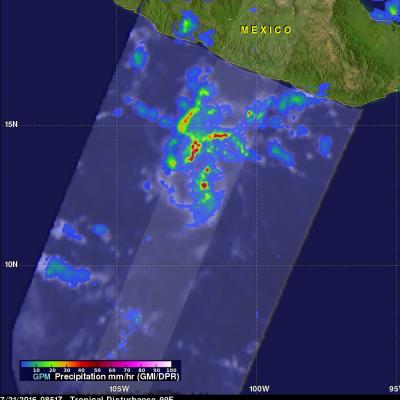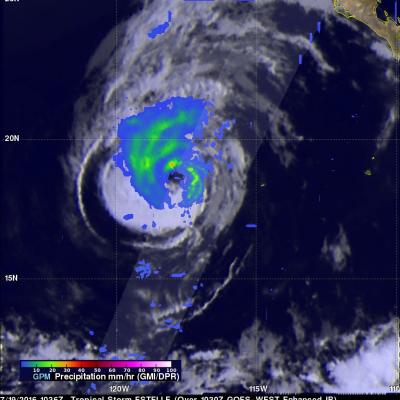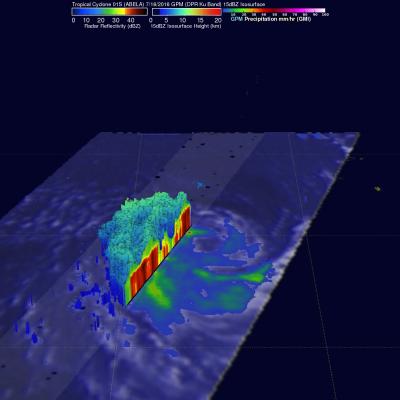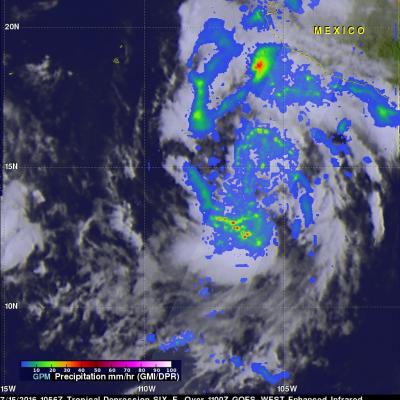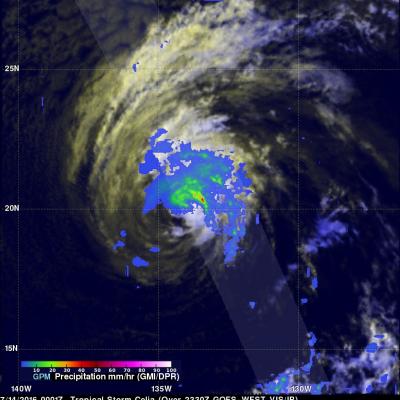GPM Sights Another Forming Tropical Cyclone
The eastern Pacific Ocean continues to spawn tropical cyclones. Seven named tropical cyclones have already formed in the Eastern Pacific ocean this year. The National Hurricane Center (NHC) has indicated that another tropical cyclone is likely to form in a broad area of low pressure southwest of Acapulco, Mexico. The GPM core observatory satellite flew directly above this increasingly organized stormy area on July 21, 2016 at 0851Z. GPM found that powerful thunderstorms in that area contained intense showers. Rain was measured by GPM's Dual-Frequency Precipitation Radar (DPR) instrument


